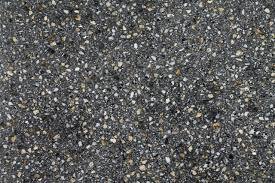Bitumen, tar, and asphalt—three materials that most people think are the same. While these materials might have the same applications, they are different. In this post, we shall discuss each of these materials in detail to help you understand their difference.
Let’s delve in!
Bitumen
Bitumen is a byproduct of petroleum, and it’s used as a binding agent. Generally, bitumen is a strong adhesive, which makes it resistant to oil or water damage. Because of this, bitumen is the best binding agent for asphalt-paved surfaces. The most common applications of bitumen include roadways, driveways, and car parks.
There are different ways to produce bitumen. The method used in the production of bitumen differs depending on its intended use. However, bitumen is a product of distilled crude oil in most cases. The distillation process helps to remove lighter fluids, thus leaving a black sticky substance, and that’s what’s used to make refined bitumen.
However, it’s important to note that refined bitumen isn’t the only form of bitumen. There are other natural sources of bitumen, which are used as an alternative to the processing of crude oil to produce bitumen. Rocks and lakes have also been sources of bitumen.
Bitumen extracted from lakes is known to have around 40% – 70% purity. For the bitumen extracted from lakes to be purified, it is boiled until the water evaporates, thus separating impurities. Rock bitumen, on the other hand, is found in sedimentary sources, which have 5% – 15% of bitumen. To extract bitumen from rocks, the rocks are crushed and heated, before the bitumen is separated from other materials.
Uses of bitumen
Bitumen is most used when making bituminous membrane products, as well as asphalt roads. Also, it is commonly used in the construction of motorways, highways, and rail networks. It’s also effective when it comes to waterproofing, and it’s used to make roofing products, alongside other industrial household applications—from sound-proofing to emulsion paints.
Here are other uses of bitumen:
- Waterproofing
- Making mastic floors for factories
- Building tank foundation
- Creating material for joint filling
- Damp-proofing
- Making canal lining to prevent soil erosion
Tar
Tar is a dark brown or black sticky liquid of free carbon and hydrocarbons, which is extracted from different organic materials, through a process known as destructive distillation. The most common sources of tar include petroleum, wood, coal, and peat.
Also, we can define tar as a thick, dark flammable liquid extracted from coal or wood, and it consists of a mixture of resins, hydrocarbons, and alcohol, among other compounds. Typically, tar is used in road construction products, and for coating and preservation of wood.
Please note that tar is a mixture of different organic compounds, and that means the quality and amount of tar can change. Also, there are different types of tar, which are extracted from different sources. The most common resins are coal tar. This is made of nitrogen, phenol, and other aromatic hydrocarbons, like xylene, toluene, and naphthalene.
Uses of tar
Coal tar is mostly used to cover surfaces because it has high resistance to corrosive materials. Also, tar is used to manufacture soap, shampoo, and fuel. Also, tar can be used to waterproof and seal the hulls of boats and ships and seal roads. Also, it is used to seal tar paper and roofing shingles.
Wood tar, on the other hand, is used to seal traditional roofing shingles, wooden boats, and also as a painting to the outside walls of wooden houses. Besides, tar acts as a natural disinfectant. Wood or pine tar oil, in particular, is used to treat the surface of wooden shingle roofs, buckets, boats, and tubs.
Asphalt
Asphalt is a mixture of two materials—aggregates and binder. The aggregates used to make asphalt include gravel, sand, and crushed stone. The sealcoating contractors at ABC Paving, say that the aggregates comprise 95% of hot mix asphalt used in different paving projects. The remaining 5% is bitumen, which is a dark or back viscous material, used to hold or bind the aggregates together.
For a better understanding of the ingredients used to make asphalt, the elemental ingredients of asphalt are hydrogen, carbon, oxygen, sulfur, nitrogen, as well as some trace amounts of vanadium, nickel, and iron.
There are different types of asphalt, which include:
- Hot mix asphalt – during the production of hot mix asphalt, the materials are heated at extremely high temperatures. This is the most durable type of asphalt, and it’s used in areas with high traffic volumes, like airport runways and highways.
- Warm mix asphalt – this type of asphalt doesn’t need high temperatures during production because of the added zeolites, waxes, and emulsions. And, although warm mix asphalt is safer for both the environment and people, and requires less fossil fuel during production, it is not as durable as hot mix asphalt. Because of this, it’s used in areas with low traffic volume, and for patching potholes.
- Mastic asphalt – it contains less bitumen compared to hot asphalt mix, and it’s mostly used for footpaths, play courts, roofing, and roads.
Asphalt uses
Asphalt is used in nearly 85% of all road projects across the world. Also, it’s used to waterproof buildings, especially flat-roofed buildings. Asphalt is also used to waterproof and seal underground water tanks. Other contractors used asphalt when constructing dams, playgrounds, parks, parking lots, reservoirs, and driveways. Farmers also use asphalt at the bottom of fish ponds to prevent water loss.











